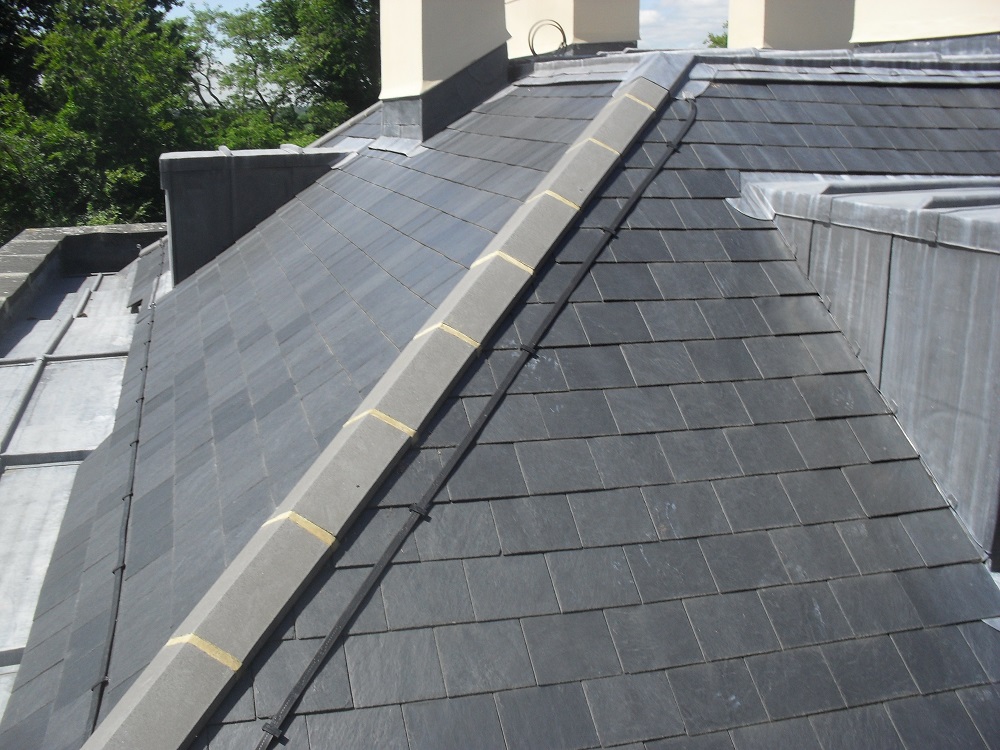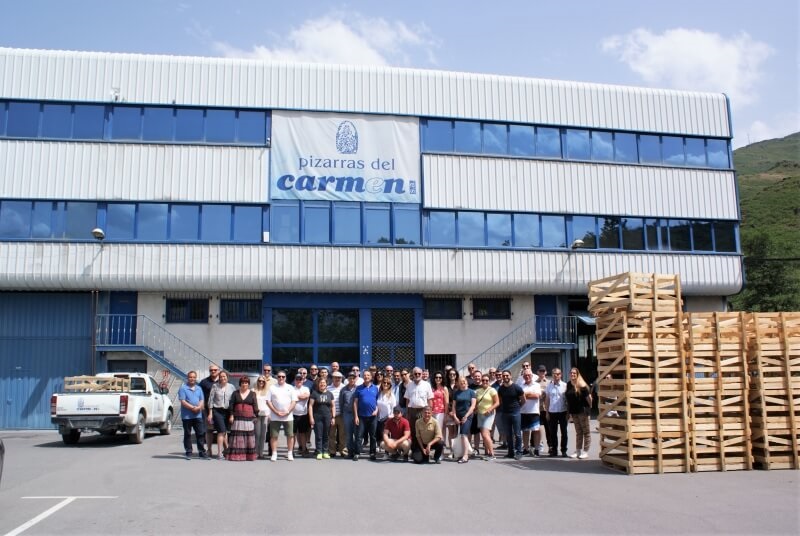Slate’s popularity as a roofing material experienced a huge boom during the Industrial Revolution throughout Europe. As transportation systems improved during the 1870s, locally mined slate was moved around the continent until the outbreak of the First World War. Today, natural slate is once again seeing a huge increase in popularity as a roofing material. This is, in part, thanks to its outstanding sustainability credentials.
Sustainable slate for a more environmentally friendly future

Slate is the perfect material for roofing. It is extremely durable and weather resistant, and also provides excellent fire resistance protection and energy efficiency performance. As we strive to reduce carbon emissions by using more eco-friendly materials and methods of production, slate has, once again, risen to prominence in the construction industry.
If you’re involved in the construction industry and you require a sustainable roofing material, slate is an excellent choice. Here are three reasons why slate roofs are the perfect choice to improve sustainability.
1. 100% natural material – Slate is a 100% naturally occurring material. It is formed over centuries of geological processes and contains none of the chemicals associated with other roofing materials. This makes slate a great choice for reducing your carbon footprint. Compared to concrete tiles – 0.19kg of CO2 per kilo, and clay tiles – 0.43kg of CO2 per kilo, natural slate contains between 0.005 and 0.054kg of CO2 per kilo.
2. Outstanding longevity – SSQ slate has a natural life expectancy of over 100 years. This is far longer than other roofing materials such as cement, concrete, and clay which usually last between 30 to 40 years. Installing a roof will always have some environmental impact from manufacturing, processing, and transportation. When you use natural slate, the material will often outlive the building where it’s installed making it the best choice for sustainability.
3. Sustainable sourcing – At the SSQ-owned Phyllite quarry in Argentina and the quarries we work with in Spain, slate extraction is achieved with very little environmental impact. Low electricity diamond cutters are used to extract the slate from the quarries where it is then split into individual slates, often by hand. Compared to the heavy industrial methods of producing clay and concrete tiles, slate extraction and production is one of the most sustainable solutions for producing roofing materials.
As you can see, natural slate such as spanish slate is an excellent roofing material and looks set to play a vital part in the global drive to reduce carbon emissions. It’s also an aesthetically attractive roofing choice and has been used in a diverse range of heritage building renovation projects across the UK.
If you’d like to find out more about using SSQ slates for your next roofing project, get in touch today. Call 020 8961 7725 or get a quote online.
Is it good to have a slate roof?
Having a slate roof is a great choice. Slate roofs offer reliable protection against water, mould and fungus since slate is impervious to water. Additionally, slate is fireproof, which is an added safety feature. Moreover, slate roofs are an eco-friendly option since they can be recycled. Therefore, choosing a slate roof can be a good investment, offering durability, safety and environmental sustainability.
How long does a slate roof last?
The durability of a slate roof is based on the type of slate utilised. Hard slate can endure from 75 to 200 years, whereas soft slate has a lifespan of approximately 50 to 125 years. Therefore, it is essential to determine the type of slate installed on the roof before deciding whether to repair, restore or replace it. With adequate maintenance, a slate roof can provide reliable protection and an appealing look for over a hundred years.


